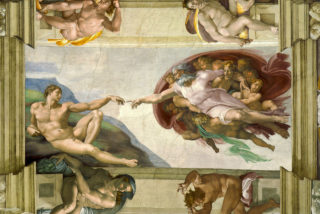The sacraments are perceptible signs (words and actions) “of the hidden reality of salvation” (CCC 774) that use elements of material nature to make visible the invisible, realizing “effectively the grace they signify” (CCC 1084). In them, “nature is taken up by God to become a means of mediating supernatural life” (LS 235). They also show the eschatological dimension of creation, because “all the good which exists here will be taken up into the heavenly feast”[1]. Symbolic actions, such as the imposition of ashes at the beginning of the Lenten season, fully show the bond that exists between our sins and the cry of the earth. One of the expressions indicated for this Rite says: “Remember that you are dust and dust you will return” (Gn 3:19). In addition to reminding us that we too are dust of the earth, an integral part of nature, that ash can express also the cry of the earth, burned and reduced to dust by consumerism and human selfishness. The celebration of reconciliation will be even more significant if signs and symbols of this type are properly used. In fact, some Protestant churches have already begun to use them in this sense[2]. The sacrament…
When we think of being in the image of God we might think of the Sistine Chapel where the figure of Adam on the ceiling just about to be awakened by the touch of God bears an identical image of the Judge and the Lord of the Resurrection on the back wall. Michelangelo’s Adam bears the face of Christ, the Alpha and Omega. We, Adam, are in the image of the one who has conquered sin and death. But there is another, more original, let’s call it “vulnerable” image that connects the creation of Adam with the birth of Jesus. In the twenty-first chapter of T.H. White’s wonderful The Once and Future King (Ace Books, New York 1987), we read a memorable account of creation. On the fifth and sixth days of creation, God gathers all the embryos of each and every species of animal life and offers each embryo a wish for something extra. The giraffe embryo gets a long neck for tree food, the porcupine asks for quills for protection, and so it goes for the entire animal kingdom. At the end of the entire ordeal, the last embryo is the human who when asked by God…
«Anche quelli contro il creato sono peccati da confessare» dice Francesco Sabato 9 febbraio 2019 l’Accademia Alfonsiana (Roma) ha celebrato il 70° anniversario della sua fondazione, come istituto universitario voluto dai Redentoristi per preparare docenti di teologia morale (ad oggi più di 5.000) sensibili alla misericordia pastorale di S. Alfonso. In tale occasione, papa Francesco ha concesso una speciale udienza ai Superiori, agli insegnanti e agli studenti, durante la quale ha pronunciato un interessante discorso, la parte più “insolita” del quale si è soffermata sulle questioni di bioetica ecologica. Tra le sfide emergenti che la teologia alfonsiana deve affrontare vi è «il grido della terra, violentata e ferita in mille modi dallo sfruttamento egoistico. La dimensione ecologica è una componente imprescindibile della responsabilità di ogni persona e di ogni nazione. Mi fa riflettere il fatto che quando amministro la Riconciliazione – anche prima, quando lo facevo – raramente qualcuno si accusa di aver fatto violenza alla natura, alla terra, al creato. Non abbiamo ancora coscienza di questo peccato. È compito vostro farlo. La teologia morale deve fare propria l’urgenza di partecipare in maniera convinta a un comune sforzo per la cura della casa comune mediante vie praticabili di sviluppo…



